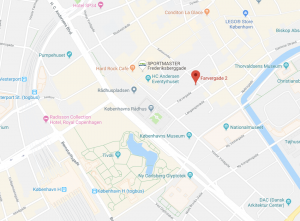A gastroscopic examination is performed by the surgeon to determine the health of the upper section of the digestive tract, and to identify any potential diseases. The disease may be located in the esophagus, stomach, and duodenum, and possible diseases include stomach ulcers and cancers, oesophageal reflux and cancers and narrowing and infection with Helicobacter Pylori (ulcer-bacteria).
The examination is performed with an endoscope that is inserted through the mouth or nostril. An endoscope is a flexible and controllable tube that allows you to examine the inner part of the esophagus, stomach and duodenum.
Before the examination
Before the examination, you will need to fast for 6 hours, although you can drink water until 2 hours prior to the examination.
If you have stomach ulcers, you should, if possible, not take medication for one week prior to the examination. This is true if you are taking Nexium, Losec, Lanzo, Pantoloc or Pariet. Additionally, one day before the examination you can take anti-acid medicine, including Alminox, Balancid, Link or Novaluzid.
The examination
The procedure lasts approx. 5 minutes.
During the examination, the patient lies on his left side. The instrument is then inserted into the mouth, after which the patient is asked to swallow, so that the instrument can enter the esophagus. During this process, there can be vomiting reflex and maybe coughing. there’s lots of room for breathing and no vomiting will occur, since the stomach is empty.
After the examination
The result of the examination is provided immediately.If tissue samples have been made, the result is available after 1 week.
If you have received local anesthesia with spray, you may not eat and drink after 1 hour, due to the risk of getting the food in the trachea.
If you have not received local anesthesia, you can eat and drink immediately after the examination is over.


